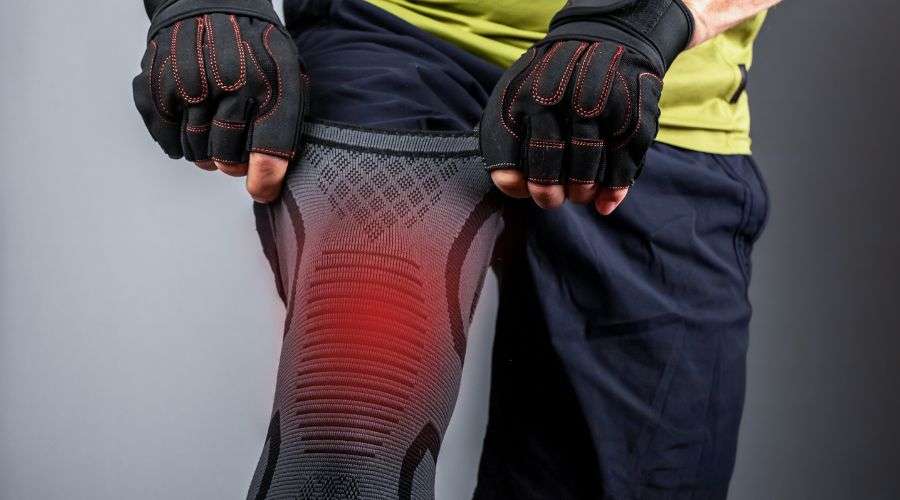
Aug 18,2025
Before hitting the squat rack, consider adding a knee brace to your fitness gear. It could provide the support needed to stabilize your knees during heavy lifts, enhancing performance and reducing strain.
Let's find out if they're the secret to supercharging your squat game. So, grab your protein shake, settle in, and let's separate fact from fiction.
Before exploring knee braces, let’s break down squat basics. You stand tall with weights on your shoulders, lower into a deep bend, and rise again, engaging quads, hamstrings, and glutes. The knees play a critical role in stabilizing and guiding this movement.
When you're deep into a squat, your knees are the unsung heroes, taking on a hefty load. It's like a construction worker carrying bricks up a ladder. Now, imagine if that worker had some extra support – enter the knee brace.
So, the real million-dollar question: Can knee braces make a difference in your squats? Let's break it down:
• A knee brace acts like a trusty sidekick, providing essential stability to your knees during heavy squats, helping them handle intense loads with confidence.
• The Balancing Act: A good knee brace can help evenly spread pressure. This stops your knees from feeling like they're carrying the weight of the world.
• Silencing the Knee Creaks: If you've got the occasional creaks and groans from your knees, a knee brace might just be the WD-40 your joints need.
• Say No to Discomfort: Knee braces can help minimize discomfort. They are especially helpful if you've been dealing with a nagging twinge during or after squats.
• Pros:
1. Added Support: Knee braces can provide that extra layer of support, particularly if you're recovering from an injury.
2. Pain Reduction: Say goodbye to unnecessary aches and pains. A knee brace might be your pain-fighting superhero.
• Cons:
1. Some experts argue against relying too much on knee braces. They say it might weaken our natural supports. It's like using an umbrella in a drizzle. It's not needed and maybe a bit counterproductive.
2. Fit Fumbles: Choosing the wrong knee brace or wearing it incorrectly can do more harm. It's like trying to fit into jeans two sizes too small – uncomfortable and possibly disastrous.
• Like Snowflakes: Bodies are unique – what works wonders for someone else might not be your cup of protein shake. Experimentation is key, folks.
• Consult the Oracle: AKA, your doctor or a fitness expert. They can be your Yoda in navigating the vast galaxy of knee braces.
• You're dealing with knee discomfort during or after squats.
• There's a history of knee injuries in your fitness saga.
• You're just starting your fitness journey – let those knees build their natural strength.
• Your doctor gives you the green light without the need for additional support.
So, are knee braces the secret sauce to unlocking squat success? It depends on the recipe you're cooking. They can be a trusty sidekick or an unnecessary accessory – the choice is yours.
Remember, your body, your rules. So, go ahead, embrace the squat challenge, and if you feel the need for a knee brace, make it your squatting sidekick. Your knees might just thank you with a standing ovation.
And there you have it – the lowdown on knee braces and squats. Go forth, squat warriors, and may your knees be as sturdy as a fortress!